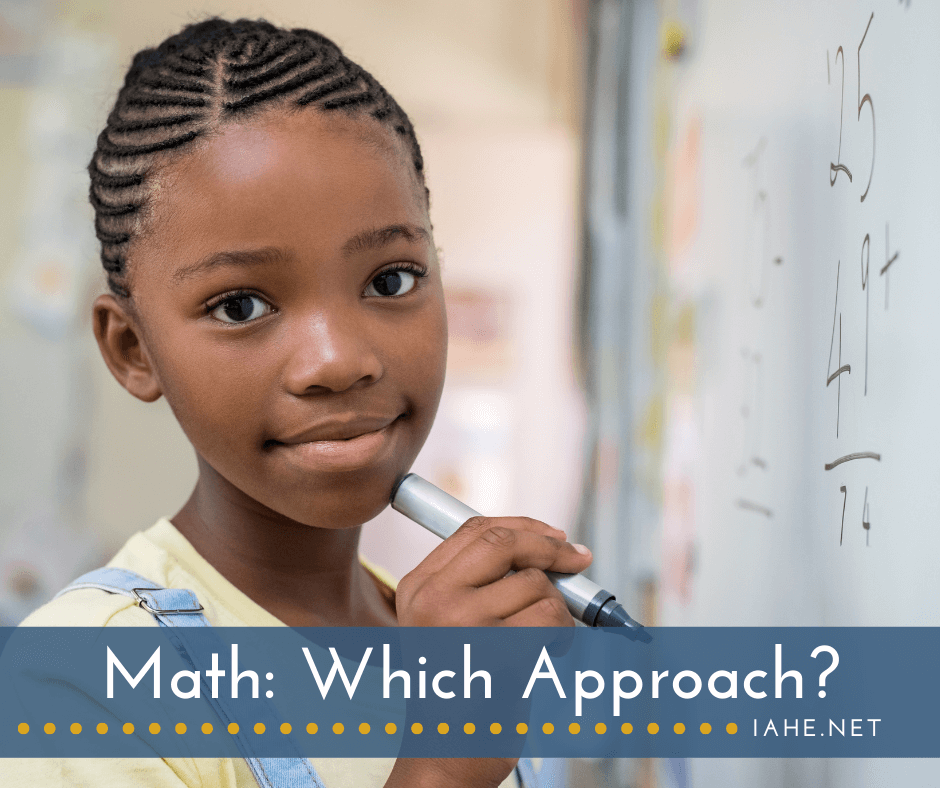
Math is everywhere. Even if you don’t notice it, you use some type of math skill everyday. You might be doing something directly with numbers, like setting a weekly budget, balancing your checkbook, or baking cookies. However, math isn’t always so direct; you use these skills even when you don’t realize it, like when you plan a trip, look at a clock, or even set the table.
Since it is used so frequently, math is a very important subject to learn and to teach, and as homeschooling parents, choosing the right approach to teaching this subject can be daunting. There are, of course, many different curriculum options out there, which can be tricky when trying to narrow down what you might like to use in your home.
Different companies each have a different approach to teaching math. The most common approaches are the spiral approach and the mastery approach. Both of these styles have their advantages, so your choice should depend on how you think your student will learn best. We will briefly go over what each approach looks like, so you can better decide which one might work best for your school and your learners.
Spiral Approach
The spiral approach does not expect mastery right away, or for that matter, for a while after introduction of the topic. In fact, many students can benefit from this approach because the learning goes quite literally in a spiral. The curriculum will introduce a new concept while continually spiralling back to previous concepts every few weeks for review and to build on them. It takes something that has already been covered and then adds in a little bit of something new.
This spiraling allows topics to be revisited in order to promote understanding while the difficulty level continues to increase. New learning is very much related to the new information that is being introduced. By doing this the learner’s understanding should increase along with the material being presented.
Examples of curricula that follow the spiral approach: Saxon, Horizons, Teaching Textbooks, Abeka
Mastery Approach
Unlike the spiral approach where a little bit of new material is added in with the old material, the mastery approach focuses on one topic at a time. With this approach, a concept is introduced to the student, and they gain a deep understanding of said concept until mastery is reached. Once mastery is achieved, the learner is able to move on to the next topic. Instead of the blocks circling back around, they are being placed right on top of one another.
Now, even though the mastery approach is taught differently, review is still done, and that normally takes place at the beginning and/or end of each chapter in order to refresh the learner’s memory and allow them to practice previously learned concepts.
Examples of curricula that follow the mastery approach: Singapore Math, Math Mammoth, ACE Math, Math-U-See.
Math is definitely not everyone’s favorite or easily learned subject, but it is beneficial and necessary to have some form of mathematical foundation in order to complete everyday tasks, not to mention to go on to higher education. Some students will thrive with one approach and not with another, and that is okay; there is no one-size-fits-all approach to teaching this subject (or any other subject for that matter).
In fact, I think it is important to remember simple hands-on learning techniques for some concepts, regardless of which approach you use. You can use manipulatives or games to help strengthen understanding. Each student is different. Don’t be afraid to mix things up if you need to and have fun; you have all the resources you need to help your student learn.
Do you need some encouragement? What does it take to be a great math teacher? This audio workshop from the 2019 IAHE Convention will give you confidence, ideas, and tools you can use in your home. You CAN Be a Great Math Teacher by Rachel Anderson
